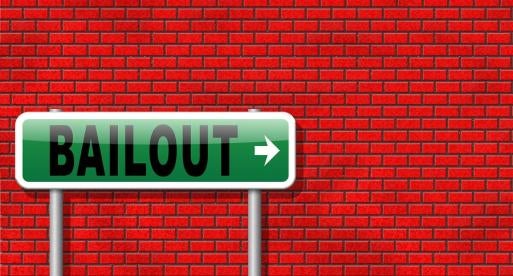Lenders began submitting their Paycheck Protection Program (PPP) loan forgiveness decisions to the Small Business Administration (SBA) on Monday, August 10. In its July 23 Procedural Notice, the SBA laid out instructions for lender submission of PPP loan forgiveness decisions to the SBA and SBA loan forgiveness reviews.
The Procedural Notice expounded on the earlier Interim Final Rules on Loan Forgiveness of PPP Loans and SBA Loan Review Procedures and Related Borrower and Lender Responsibilities that were published in the Federal Register on June 1, 2020 (collectively, “Forgiveness Rules”). The Forgiveness Rules were subsequently amended slightly by the SBA’s June 26 Interim Final Rule (Revised Rule) to conform with the provisions of the Paycheck Protection Program Flexibility Act of 2020 (Flexibility Act), which was passed on June 5, 2020, as well as the development of the alternative PPP EZ Loan Forgiveness Application and Instructions, published on June 16, 2020.
The Procedural Notice has not changed or added much to the substantive responsibilities placed on lenders and borrowers by the Forgiveness Rules as modified by the Revised Rule. As required by the Forgiveness Rules, the Procedural Notice reiterated that the borrower must submit its forgiveness application to the lender, which is then responsible for all required forgiveness actions and will receive the forgiveness payment from the SBA. As mentioned in our May 29 client alert, this likely is a larger burden than lenders desire, especially since the Procedural Notice reaffirms that the lender is the party responsible for making the initial decision on forgiveness and communicating its decision to the SBA and the borrower.
The Procedural Notice does advise that the SBA has partnered with Goldschmitt-CRI to make available a secure software as a service (SaaS) platform (PPP Forgiveness Platform) to accept loan forgiveness decisions, supporting documentation, and requests for forgiveness payments that will be available only to PPP lenders, not to borrowers. The PPP Forgiveness Platform will provide a user interface for lenders to upload required data and documentation, monitor the status of forgiveness requests, and respond to the SBA should it select a particular loan for review.
The Procedural Notice has reiterated that a borrower may submit a Loan Forgiveness Application before the end of either the original eight-week or 24-week extended period allowed for by the Flexibility Act, provided that the borrower has, by the time of such submission, used all the loan proceeds for which the borrower is requesting forgiveness, and further provided that the borrower’s loan forgiveness application accounts for any salary reductions in excess of 25% for the full covered period. The SBA will post a link to the PPP Forgiveness Platform on its website on August 10, 2020, the date on which the SBA will begin accepting lender submissions of forgiveness applications; however, an interesting caveat — added almost as a postscript within the Procedural Notice — noted that the planned start date is “subject to extension if any new legislative amendments to the forgiveness process necessitate changes to the system.”
The Procedural Notice also requires lenders to provide a single point of contact and an email address for Authorizing Officials (AOs) who will be available to respond to SBA inquiries regarding a forgiveness application submission. All AOs currently registered in the CAFS/ETRAN system, which is the system that was used by lenders to load the PPP loans, will receive a welcome email from the SBA with instructions on how to access the new platform. According to the Procedural Notice, the email address delivering the instructions will be “PPPForgivenessRequests@SBA.gov.” Lenders should ensure that their email filters allow them to receive emails from that address. Detailed instructions on how AOs can use the PPP Forgiveness Platform will be available upon login.
If an AO does not receive a welcome email, it should contact the SBA’s PPP Lender Hotline at 833.572.0502 for instructions on how to access the PPP Forgiveness Platform. AOs will be able to add to the PPP Forgiveness Platform up to 10 additional users who will be able to submit and monitor forgiveness requests on behalf of the lender. The lender will use the PPP Forgiveness Platform to provide ACH credit information for the deposit account where the lender will receive PPP forgiveness payments, and the ACH credit information must be for an account of the lender of record. If the ACH credit information or the routing number is invalid, the lender will not receive forgiveness payments.
If a lender fails to provide a point of contact, all lender submissions will be rejected and returned to the lender. The Procedural Notice also states that lender submissions may be rejected by an initial screening process in the PPP Forgiveness Platform if they contain errors or are incomplete. If the lender submission is rejected, the PPP Forgiveness Platform will notify the lender. The lender must then correct the submission and resubmit it to the SBA, which will restart the 90-day period allowed for the SBA to remit forgiveness payments.
The Procedural Notice warns that if a lender fails to cooperate as required, the SBA may reject the lender’s submission and the lender may not receive a forgiveness payment. This appears to create at least two problems for the lender: 1) the elimination of an anticipated means for repayment of the subject PPP loan and 2) possible legal liability from its customer for damaging its forgiveness prospects.
Before the SBA will accept the submission, lenders must confirm the following for each PPP forgiveness application:
-
The submission accurately reflects the lender’s decision regarding the borrower’s loan forgiveness application.
-
The information provided by the lender to the SBA with the submission accurately reflects the lender’s records for the PPP loan.
-
The lender has made its decision in accordance with the requirements set forth in the Forgiveness Rules.
-
The PPP loan has not been cancelled or repaid.
-
The lender has not submitted a previous loan forgiveness decision to the SBA for that particular PPP loan, unless the application is a resubmission following a rejection or a reconsideration of a denial without prejudice.
Lenders can use the PPP Forgiveness Platform to confirm all of the above.
The Procedural Notice clarifies that when a lender submits its decision on a forgiveness application to the SBA through the PPP Forgiveness Platform, the lender must check a box indicating the decision. The choices for the lender will be:
-
Approved in Full
-
Approved in Part
-
Denied
-
Denied without Prejudice — This should be used only when an SBA loan review is pending at the time the borrower submits a loan forgiveness application.
If a lender denies a borrower’s application in full, the lender must notify the borrower in writing that the lender has submitted a decision to the SBA denying the application. The Procedural Notice adds that the SBA reserves the right to review a lender’s decision in its sole discretion, and if the SBA undertakes such a review, it will notify the lender through the PPP Forgiveness Platform. In this case, the lender must notify the borrower in writing within five business days of receipt of the notification.
Additionally, within 30 days of notice of denial from the lender, the borrower may notify the lender that it is requesting a review of the lender’s decision by the SBA. Within five days of receipt of the borrower’s request for review, the lender must notify the SBA of the request, and the SBA will notify the lender if it declines a request for review. If the SBA accepts a borrower’s request for review, it will notify the borrower and the lender of the results of the review. Presumably, for the lender, that notification will come through the PPP Forgiveness Platform, but the Procedural Notice does not say how or when that notification will occur for the borrower.
In cases where the lender selects “Approved in Part,” the Procedural Notice states that the lender must enter its own data for each line item for which it determines a different amount of forgiveness than the amount on the borrower’s application. The SBA will use the line item amounts entered by the lender to verify the calculations and facilitate the final forgiveness payment amount. However, the Procedural Notice also advises that if a lender submits to the SBA a decision that a borrower is not entitled to forgiveness in any amount, the lender must submit all required documentation and data and provide the SBA with its reason for denial.
Finally, the Procedural Notice says that if loan documentation, or any other information, submitted to the SBA indicates that the borrower may be ineligible for a PPP loan, or may be ineligible to receive the loan amount or loan forgiveness amount claimed by the borrower, the SBA will require the lender to contact the borrower in writing to request additional information. The SBA may also request additional information directly from the borrower. Most importantly, the Procedural Notice warns that a failure to respond to the SBA’s inquiry may result in a determination that the borrower was ineligible for a PPP loan or ineligible to receive the loan amount or loan forgiveness amount claimed by the borrower. Again, the credit and litigation risk for the lender in that warning is worth noting.
If an application is approved and the lender receives the remittance from the SBA of the loan forgiveness amount, the lender is responsible for notifying the borrower of the receipt. Conversely, if the SBA determines that no amount of the loan is eligible for forgiveness, the lender is responsible for notifying the borrower of that decision as well and informing them of the date on which the borrower’s first payment is due.
The Procedural Notice, like the Forgiveness Rules, fails to clarify whether the lender or borrower will receive a notification of “approval” from the SBA prior to receiving the forgiveness proceeds. Therefore, it is reasonable to assume that both may have to wait up to 90 days after an application is initially approved by the lender and submitted to the SBA before learning the ultimate fate of the loan’s forgiveness. Also consistent with the Forgiveness Rules, the Procedural Notice states that the SBA intends to issue a subsequent interim final rule that addresses the process for a borrower’s appeal of the SBA’s determination that the borrower is ineligible for a PPP loan or for the loan amount or loan forgiveness amount claimed by the borrower; there is no indication, as of now, as to whether that process will be available for those who begin submitting forgiveness applications on August 10.
As for August 10, the Procedural Notice at least signals that willing borrowers and lenders will be able to begin seeking forgiveness on that date. There does, however, seem to be some who plan to wait a little longer to see whether Congress or the SBA will ever acquiesce to those pleading for a simpler forgiveness process. The Procedural Notice does seem to allow for such a possibility by mentioning that new legislative amendments could necessitate changes to the SBA’s plans. For example, the Health, Economic Assistance, Liability Protection and Schools (HEALS) Act recently proposed by Senate Republicans calls for such simplification, including the near automatic forgiveness for loans less than $150,000. However, considering the political rhetoric aimed at the PPP recently and the difficulty Congress is having crafting legislation that can be passed by both houses and signed by the President, it is hard to predict exactly how probable that contingency will be.




 i
i

